18.10.130 On-premises sign standards by type and district.
(a) All sign copy shall pertain only to the business, industry or other pursuit conducted on or within the premises on which such sign is erected or maintained except as provided in TMC 18.10.180 (Off-premises signs).
(b) This section establishes standards for individual attached sign types, including standards for:
(1) Illumination.
(2) Whether the particular sign type is permitted in a particular zoning district.
(3) The maximum number of signs per building or parcel.
(4) Maximum sign area allocation for wall signs, awning and canopy signs, roof signs, and projecting signs.
(5) For freestanding signs, the maximum number per street frontage, maximum height, maximum area, and notes and exceptions specific to freestanding signs.
(6) Incidental signs.
(c) Illumination. Internal, external, and halo lit illumination are allowed except where expressly prohibited. Direct illumination is allowed in C-2, C-3, C-4, I-1, I-2, X-1, X-3, D-1, and D-3 zoning districts, and is prohibited in all other zoning districts.
(d) Wall Signs.
(1) Definitions.
(i) Wall Sign.
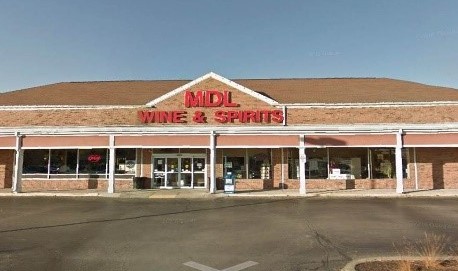
A sign, other than a projecting sign, roof sign or window sign, that uses a building wall as its primary source of support and that (A) is placed directly on and contained totally within the dimensions of the outside wall; and (B) does not extend more than 18 inches from a building surface.
(2) Standards.
|
Wall Signs |
Zoning Districts |
|||||||||||
|---|---|---|---|---|---|---|---|---|---|---|---|---|
R, M-1, M-1a, RR-1 |
M-2, M-3, + Nonresidential uses in R, M-1, M-1a, OS-1 |
O&I-1, O&I-2, O&I-3 |
C-1 |
C-2 |
C-3, C-4 |
I-1, I-2 |
U-1, MS-1 |
X-1, X-3 |
X-2 |
D-1, D-3 |
D-2 |
|
|
Permitted? |
no |
yes |
yes |
yes |
yes |
yes |
yes |
yes |
yes |
yes |
yes |
yes |
|
Number per 50 linear feet of building frontage Note 1 |
n/a |
1 |
1 |
1 |
no limit |
no limit |
no limit |
1 |
no limit |
no limit |
no limit on first floor Note 4 |
no limit |
|
Sign Area Allocation square feet per linear foot of building frontage |
n/a |
1.5 |
1.5 |
2 |
3 |
3.2 |
3.2 |
1.5 |
3 |
3 |
3 |
2 |
|
Sign Area Allocation – All Attached Signs square feet per linear foot of building front |
n/a |
2 |
2 |
2.5 |
3 |
3.2 |
3.2 |
2 |
3 |
3 |
3.2 |
2.5 |
|
Sign Area Maximum square feet per sign Note 2 |
n/a |
100 |
100 |
100 |
200 |
250 |
250 |
100 |
200 |
200 |
200 |
100 |
|
Electronic Message Centers % of allowed sign |
n/a |
50% |
50% |
50% |
50% |
50% |
50% |
50% |
50% |
50% |
50% |
50% |
Notes/Exceptions:
1. Regardless of the width of the building facade, each single tenant building is allowed a minimum of one wall sign per facade, and each multitenant or multiuse building is allowed one sign per tenant or use per facade.
2. Wall signs on facades located 300 feet or more from the street right-of-way to which they face are permitted up to 200 sf in O&I, C-1, and D-2 districts, and up to 300 sf in all other zoning districts.
3. Wall signs shall not cover or obstruct any architectural features deemed integral to the historic appearance or character of the building. Such features shall include, but are not limited to, transom windows, detailed brick, tile, or shingles.
4. Wall signage above the first floor is limited to no more than one sign not exceeding 150 square feet, for every 50 linear feet of street frontage, on the exterior wall of the floor on which the signage is located. For buildings in excess of three floors or exceeding 40 feet in height, one wall sign per building face is permitted no larger than 300 square feet and located above the third floor or above 40 feet, whichever is the least. For signage above the third floor, the Planning and Development Director, or the Historic Landmarks Commission if the sign is located on a historic landmark or in a historic district, may approve signage of greater than 300 square feet to the extent the applicant demonstrates signage exceeding 300 square feet is necessary for visibility and legibility of the sign.
(e) Awning, Canopy and Marquee Signs.
(1) Definitions.
(i) Awning Sign.
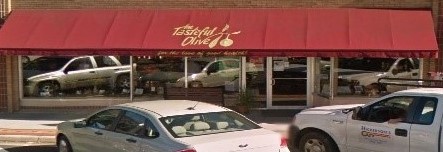
A sign that is painted, stenciled or attached to the surface of an awning. An “awning” means a roof-like cover that projects from the wall of a building to shield a doorway, walkway, or window from inclement weather or the sun. Awnings are often made of fabric or flexible material supported by a rigid frame and may be retracted into the face of the building.
(ii) Canopy Sign.
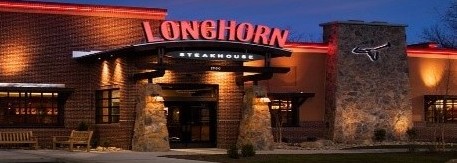
A sign attached to the surface of a canopy. A “canopy” means an overhead structure made of solid material, other than an awning, that is either attached to a building wall and extends at least 12 inches from the face of the building or a freestanding overhead structure supported by posts.
(iii) Marquee Sign.
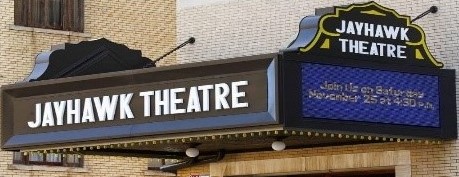
A marquee is a roof-like projection or shelter, typically over the entrance to an entertainment venue, and typically containing an illuminated flat area for static or changeable sign copy.
(2) Standards.
|
Awning, Canopy, and Marquee Signs Note 1 |
Zoning Districts |
|||||||||||
|---|---|---|---|---|---|---|---|---|---|---|---|---|
R, M-1, M-1a, RR-1 |
M-2, M-3, + Nonresidential uses in R, M-1, M-1a, OS-1 |
O&I-1, O&I-2, O&I-3 |
C-1 |
C-2 |
C-3, C-4 |
I-1, I-2 |
U-1, MS-1 |
X-1, X-3 |
X-2 |
D-1, D-3 |
D-2 |
|
|
Permitted? |
no |
yes |
yes |
yes |
yes |
yes |
yes |
yes |
yes |
yes |
yes |
yes |
|
Number per tenant or establishment per side |
n/a |
1 |
1 |
1 |
1 |
* |
1 |
1 |
1 |
1 |
* |
* |
|
Sign Area Allocation square feet per linear foot of building frontage |
n/a |
1.5 |
1.5 |
2 |
3 |
3.2 |
3.2 |
1.5 |
3 |
3 |
3 |
2 |
|
Sign Area Allocation – All Attached Signs square feet per linear foot of building front |
n/a |
2 |
2 |
2.5 |
2.5 |
3.2 |
3.2 |
2 |
3 |
3 |
3.2 |
2.5 |
|
Sign Area Maximum square feet per sign Note 2 |
n/a |
50 |
50 |
50 |
50 |
100 |
100 |
100 |
100 |
100 |
50 |
50 |
|
Electronic Message Centers % of allowed sign Note 2 |
n/a |
50% |
50% |
50% |
50% |
50% |
50% |
50% |
50% |
50% |
50% Note 2 |
50% |
|
*No set limit; number is limited by sign area allocation. |
||||||||||||
Notes/Exceptions:
1. Signs attached at an angle between zero and less than 45 degrees to the building facade shall be regulated as wall signs and subject to the dimensional standards in this table. Signs attached at a 45-degree or greater angle to the building facade shall be regulated as projecting signs.
2. For marquees, electronic message centers (EMCs) may comprise 100% of the marquee face size allowed.
(f) Roof Signs.
(1) Definitions.
(i) Roof Sign.
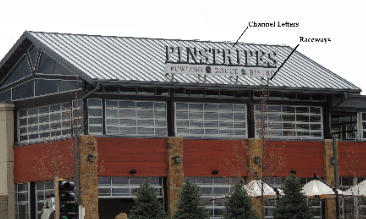
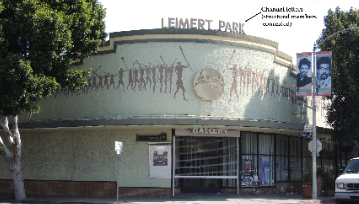
A sign that is mounted upon or above a roof or parapet of a building or structure that is wholly or partially supported by the building or structure, and which projects above the cornice or parapet line of a building with a flat roof, the eave line of a building with a gambrel, gable, or hip roof, or the deck line of a building with a mansard roof. A sign mounted on a sloped roof or mansard having a pitch 1:2 or more (one foot horizontal and two feet vertical) is a wall sign. A sign mounted on a sloped roof or mansard having a lesser vertical slope is a roof sign and shall comply with the standards in the table below.
(2) Standards.
|
Roof Signs |
Zoning Districts |
|||||||||||
|---|---|---|---|---|---|---|---|---|---|---|---|---|
R, M-1, M-1a, RR-1 |
M-2, M-3, + Nonresidential uses in R, M-1, M-1a, OS-1 |
O&I-1, O&I-2, O&I-3 |
C-1 |
C-2 |
C-3, C-4 |
I-1, I-2 |
U-1, MS-1 |
X-1, X-3 |
X-2 |
D-1, D-3 |
D-2 |
|
|
Permitted? |
no |
no |
no |
yes |
yes |
yes |
yes |
yes |
yes |
yes |
yes |
yes |
|
Number per tenant or establishment per side |
n/a |
n/a |
n/a |
1 |
1 |
1 |
1 |
1 |
1 |
1 |
1 Note 2 |
1 |
|
Sign Area Allocation square feet per linear foot of building frontage |
n/a |
n/a |
n/a |
1.5 |
2 |
2 |
2 |
2 |
2 |
2 |
2 Note 2 |
2 |
|
Sign Area Allocation – All Attached Signs square feet per linear foot of building frontage |
n/a |
n/a |
n/a |
2.5 |
3 |
3.2 |
3.2 |
2 |
3 |
3 |
3.2 |
2.5 |
|
Sign Area Maximum square feet per sign |
n/a |
n/a |
n/a |
50 |
50 |
100 |
100 |
50 |
50 |
50 |
50 Note 2 |
50 |
|
Height/Placement |
n/a |
n/a |
n/a |
Note 1 |
Note 1 |
Note 1 |
Note 1 |
Note 1 |
Note 1 |
Note 1 |
Note 1 |
Note 1 |
|
Electronic Message Centers % of allowed sign |
n/a |
n/a |
n/a |
50% |
50% |
50% |
50% |
50% |
50% |
50% |
50% |
50% |
Notes/Exceptions:
1. In districts where roof signs are allowed, signs may be installed on the parapet or edge of a flat roof or on the sloped part of a pitched roof. Roof signs installed on a flat roof shall be no higher than three feet above that part of the roof on which the sign is installed. Roof signs on a pitched roof shall not extend above the top of the peak or ridgeline of the roof.
2. Each building that exceeds three floors or 40 feet is permitted one roof sign no larger than 300 square feet. The height of a roof sign, measured from the top of the highest parapet to the top of the sign, shall not exceed 25 percent of the height of the building or 30 feet, whichever is most restrictive. Roof signs shall comply with all applicable engineering and construction code requirements. The Planning and Development Director, or the historic landmarks commission if the sign is located on a historic landmark or in a historic district, may approve signage exceeding the above dimensional standards to the extent the applicant demonstrates signage exceeding the dimensional standards is necessary for visibility and legibility of the sign.
(g) Projecting Signs.
(1) Definitions.
(i) Projecting Sign.
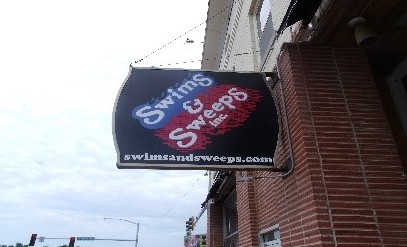
A sign supported by and extending at least 18 inches from a building wall.
(2) Standards.
|
Projecting Signs |
Zoning Districts |
|||||||||||
|---|---|---|---|---|---|---|---|---|---|---|---|---|
R, M-1, M-1a, RR-1 |
M-2, M-3, + Nonresidential uses in R, M-1, M-1a, OS-1 |
O&I-1, O&I-2, O&I-3 |
C-1 |
C-2 |
C-3, C-4 |
I-1, I-2 |
U-1, MS-1 |
X-1, X-3 |
X-2 |
D-1, D-3 |
D-2 |
|
|
Permitted? |
no |
yes |
yes |
yes |
yes |
yes |
yes |
yes |
yes |
yes |
yes |
yes |
|
Number per tenant or establishment per side |
n/a |
1 |
1 |
1 |
1 |
1 |
1 |
1 |
1 |
1 |
1 |
1 |
|
Sign Area Allocation square feet per linear foot of building frontage |
n/a |
0.5 |
0.5 |
0.5 |
1 |
1 |
1 |
1 |
1 |
1 |
1 |
1 |
|
Sign Area Allocation – All Attached Signs square feet per linear foot of building frontage |
n/a |
n/a |
n/a |
2.5 |
3 |
3.2 |
3.2 |
2 |
3 |
3 |
3.2 |
2.5 |
|
Sign Area Maximum square feet per sign |
n/a |
15 Note 1 |
15 Note 1 |
15 Note 1 |
30 Note 1 |
30 Note 1 |
30 Note 1 |
15 Note 1 |
45 Note 1 |
45 Note 1 |
75 Note 1 |
45 Note 1 |
|
Height/Placement |
n/a |
n/a |
n/a |
Note 2 |
Note 2 |
Note 2 |
Note 2 |
Note 2 |
Note 2 |
Note 2 |
Note 2 |
Note 2 |
|
Electronic Message Centers % of allowed sign |
n/a |
50% |
50% |
50% |
50% |
50% |
50% |
50% |
50% |
50% |
50% |
50% |
Notes/Exceptions:
1. An exception to the sign area standard may be made by the Planning and Development Director where it can be demonstrated that any proposed projecting sign supports or restores the historical significance of a building.
2. Projecting signs:
a. Shall mount to the exterior of the first or second floors.
b. Shall not extend more than six feet or beyond the outer edge of the sidewalk, whichever is greater.
c. Shall not extend into any portion of the street right-of-way other than a sidewalk.
d. Shall have lower edge of sign be at least 10 feet above sidewalk and 14 feet above any alley surface where vehicles may pass below.
e. Shall not have the upper edge of the sign extend vertically above the eave line of a structure.
f. Shall be attached at a 45-degree or greater angle to the supporting structure and anchored no more than six inches from the structure. Signs attached at an angle between zero and less than 45 degrees to the building facade shall be regulated as wall signs.
(h) Freestanding Signs.
(1) Definitions.

(i) Freestanding Sign. A sign supported by a column, pole, pylon, foundation, pedestal or other structure mounted in the ground.
(ii) Monument Sign. A freestanding sign whose sign surface is attached to a base where the width of the widest part of the base or cladding over structural supports is at least 80 percent of the width of the widest part of the sign face for signs up to 25 feet in height.
(2) Standards.
|
Freestanding Signs |
Zoning Districts |
||||||||||||
|---|---|---|---|---|---|---|---|---|---|---|---|---|---|
R, M-1, M-1a, RR-1 |
M-2, M-3, + Nonresidential uses in R, M-1, M-1a, OS-1 |
O&I-1 |
O&I-2, O&I-3 |
C-1 |
C-2 |
C-3, C-4 |
I-1, I-2 |
U-1, MS-1 |
X-1, X-3 |
X-2 |
D-1, D-3 |
D-2 |
|
|
Sign Type Permitted? Note 11 M=monument |
n/a |
M |
M |
M |
M |
M Note 2 |
M Note 3 |
M Note 3 |
M |
M |
M |
M |
M |
|
Number per street frontage Notes 1, 5, 12 |
n/a |
1 |
1 |
1 |
1 |
1 |
1 |
1 |
1 |
1 |
1 |
1 |
1 |
|
Sign Area Allocation square feet per linear foot of lot frontage Note 4 |
n/a |
0.5 |
0.5 |
0.5 |
0.5 |
0.5 |
0.5 |
0.5 |
0.5 |
0.5 |
0.5 |
0.5 |
0.5 |
|
Sign Area Maximum square feet per sign on local street/collector Note 5 |
n/a |
40/50 |
40/50 |
50/60 |
40/50 |
80 Note 6 |
120 Note 7 |
120 Note 7 |
80 |
50 |
50 |
50 |
50 |
|
Sign Area Maximum (Arterial) square feet per sign on arterials Notes 4, 5 |
n/a |
60 |
60 |
70 |
60 |
80 Notes 2, 6 |
120 Notes 3, 7 |
120 Notes 3, 7 |
80 |
50 |
50 |
50 |
50 |
|
Height maximum feet |
n/a |
7-10 Note 8 |
7-10 Note 8 |
7-10 Note 8 |
7-10 Note 8 |
15 Notes 2, 6 |
25 Notes 3, 7 |
25 Notes 3, 7 |
15 |
10 |
10 |
10-20 Note 9 |
10 |
|
Setbacks minimum feet from property line Note 12 |
n/a |
5 |
5 |
5 |
5 |
5 |
5 |
1 |
5 |
1 |
1 |
1 |
1 |
|
Electronic Message Centers % of allowed sign |
n/a |
50% |
50% |
50% |
50% |
50% |
50% |
50% |
50% |
50% |
50% |
50% |
50% |
Notes/Exceptions:
1. Number of Signs. Where the zoning lot has street frontage on an arterial or collector of more than 500 feet, one additional sign oriented to the arterial or collector is permitted for each additional 500 feet of street frontage. Freestanding signs located along a single street frontage shall be spaced a minimum of 250 feet apart except where allowed by a master sign plan.
2. Highway Signs (C-2). Sign permitted to a height of 35 feet and sign area of 150 square feet within an 800-foot radius of the intersecting centerlines of I-70, I-470, or US-75 (north of I-70 and south of I-470) and an arterial/collector with access OR within 120 feet of the right-of-way for an on/off ramp. Sign permitted to a sign area of 150 square feet within an 800-foot radius of the intersecting centerlines of US-24 and an arterial/collector with access. Signs exceeding a height of 25 feet may be mounted on two cladded columns each at least two feet wide if their design is integrated with or matches overall sign design.
3. Highway Signs (C-3, C-4, I-1, I-2). Sign permitted to a height of 55 feet and sign area of 250 square feet within an 800-foot radius of the intersecting centerlines of I-70, I-470, or US-75 (north of I-70 and south of I-470) and an arterial/collector with access OR within 120 feet of the right-of-way for an on/off ramp. Sign permitted to a sign area of 250 square feet within an 800-foot radius of the intersecting centerlines of US-24 and an arterial/collector with access. Signs permitted by exception exceeding a height of 35 feet may be mounted on a pole or pylon without covers.
4. Minimum Size. Regardless of frontage linear feet, minimum size permitted shall be 50 square feet in C-3, C-4, I-1, and I-2 districts and 40 square feet in all other districts except where restricted by a master sign plan.
5. Corner Lots. If the property has two or more frontages on an arterial or collector, the owner may elect to combine allowed freestanding signs into a single freestanding sign up to 130 percent of the maximum sign area allowed.
6. Setback Allowances (C-2). Freestanding signs set back 10 feet or more from street rights-of-way and all other property lines are allowed an increase in height of two feet and an increase in area of 25 percent over the height and area allowed at the minimum required setback. For each additional five-foot setback the allowed sign area may increase by five percent and allowed height may increase by two feet. In no case shall the sign exceed a height of 20 feet and area 40 percent greater than the area allowed at the minimum setback.
7. Setback Allowances (C-3, C-4, I-1, I-2). Freestanding signs set back 10 feet or more from street rights-of-way and all other property lines are allowed an increase in height of two feet and an increase in area of 25 percent over the height and area allowed at the minimum required setback. For each additional five-foot setback the allowed sign area may increase by five percent and allowed height may increase by two feet. In no case shall the sign exceed a height of 30 feet and area 40 percent greater than the area allowed at the minimum setback.
8. Height by Street Classification. Maximum height shall be seven feet on local/collector streets and 10 feet on arterial streets.
9. Historic Districts (D-1, D-3). Maximum height of 10 feet within historic districts.
10. Master Sign Plans. For retail centers and office, institutional, and industrial parks, one center sign shall be permitted that allows exceptions to maximum height and area pursuant to criteria in this chapter for master sign plans.
11. Design of Sign Base or Support. A sign with a base less than the minimum width described herein may be approved by the Planning and Development Director when conditions of the site are such that sight distance requirements and minimum parking requirements cannot be met without reducing the required base width. Any freestanding sign permitted greater than 25 feet in height may be a non-monument sign pursuant to this chapter for master sign plans and highway signs.
12. Location, Setback, and Orientation of Sign. Signs shall be oriented to the street providing frontage to the business or establishment and be located toward the front of the parcel. A sign with a setback less than the minimum setback described herein may be approved by the Planning and Development Director when conditions of the site are such that sight distance requirements and minimum parking requirements cannot be met without reducing the required setback or location.
(i) Freestanding Incidental Signs.
(1) Definitions.
(i) Freestanding Incidental Sign. A freestanding sign with copy located on a durable panel that is normally incidental or secondary to the allowed use of the property, but can contain any message or content.

(2) Standards.
|
Freestanding Incidental Signs |
Zoning Districts |
|||||||||||
|---|---|---|---|---|---|---|---|---|---|---|---|---|
R, M-1, M-1a, RR-1 |
M-2, M-3, + Nonresidential uses in R, M-1, M-1a, OS-1 |
O&I-1, O&I-2, O&I-3 |
C-1 |
C-2 |
C-3, C-4 |
I-1, I-2 |
U-1, MS-1 |
X-1, X-3 |
X-2 |
D-1, D-3 |
D-2 |
|
|
Permitted? Note 6 |
yes |
yes |
yes |
yes |
yes |
yes |
yes |
yes |
yes |
yes |
yes |
yes |
|
Number per 300 feet of street frontage/per each additional 300 feet of street frontage |
1 |
1 Note 1 |
1 Note 1 |
1 Note 1 |
2/1 Note 1 |
2/1 Note 1 |
2/1 Note 1 |
2/1 Note 1 |
1 Note 1 |
2/1 Note 1 |
2/1 Note 1 |
1 Note 1 |
|
Sign Area Maximum square feet per sign within 30 feet/beyond 30 feet of front property line Notes 2, 5 |
6/6 |
6/32 |
6/32 |
6/32 |
6/32 |
6/32 |
6/32 |
6/32 |
6/32 |
6/32 |
6/32 |
6/32 |
|
Sign Area – All Incidental Signs square feet of all signs in aggregate |
6 |
80 |
80 |
80 |
150 |
150 |
150 |
150 |
80 |
150 |
150 |
80 |
|
Height maximum feet within 30 feet/beyond 30 feet of front property line |
4/4 |
4/8 |
4/8 |
4/8 |
6/8 |
6/8 |
6/8 |
6/8 |
4/8 |
6/8 |
6/8 |
4/8 |
|
Spacing feet from any sign within 30 feet of front property line |
n/a |
25 |
25 |
25 |
25 |
25 |
25 |
25 |
25 |
25 |
25 |
25 |
|
Setbacks minimum feet from front property line |
0 |
0 |
0 |
0 |
0 |
0 |
0 |
0 |
0 |
0 |
0 |
0 |
|
Illumination? |
no |
no |
yes |
yes |
yes |
yes |
yes |
yes |
yes |
yes |
yes |
yes |
|
Changeable Copy? |
no |
no |
no |
no |
yes |
yes |
yes |
yes |
yes |
yes |
yes |
yes |
|
Electronic Message Centers? |
no |
no |
no |
no |
Note 3 |
Note 3 |
Note 3 |
Note 3 |
Note 3 |
Note 3 |
Note 3 |
Note 3 |
Notes/Exceptions:
1. Number of Signs. No restrictions on the number of incidental signs set back 30 feet or more from all property lines.
2. Property Size. Any property over one acre is permitted the highest maximum sign area and height allowed incidental signs under any district provided it is set back at least 30 feet from the front property line.
3. EMC Setbacks. Electronic message centers (EMCs) on incidental signs shall be prohibited within 30 feet of the front property line.
4. Portable Pedestrian Signs. Buildings set back five feet or less from the public street right-of-way where a sidewalk is present may place portable signs (e.g., A-frame) on sidewalks in the street right-of-way provided a minimum width of five feet is maintained for safe pedestrian passage, they comply with ADA, and are removed during nonbusiness hours.
5. Nonilluminated Signs. Other than residential uses in R, M-1, M-1a, RR-1, and OS-1 districts, nonilluminated signs are allowed within 30 feet of property lines without restriction to height and area.
6. Variance. For incidental signs that qualify under a master sign plan or that otherwise meet the intent and goals of the sign regulations as determined by the Planning and Development Director, changes up to 20 percent of dimensional standards may be approved.
7. Permit Required. Nonilluminated incidental signs do not require sign permits. All other freestanding incidental signs shall require a sign permit if permanently affixed to the ground.
(Ord. 20207 § 14, 9-10-19.)